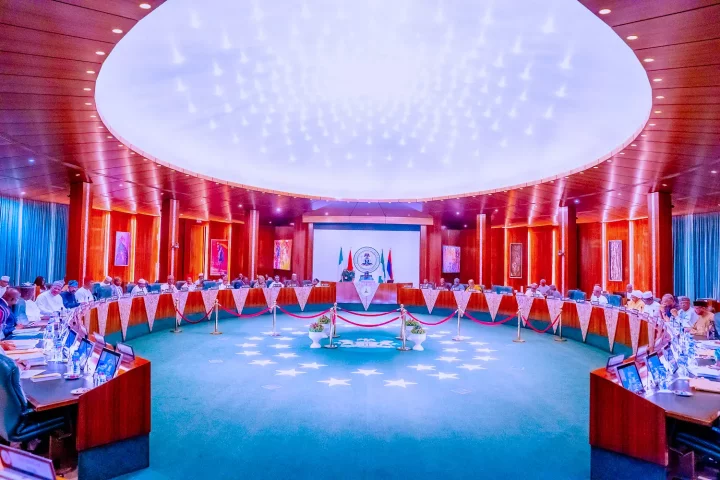
As the controversy over the cost of governance in Nigeria rages, findings of a study show how states squander funds on overhead costs to the detriment of capital projects.
Case study is the 2019 fiscal year and study carried out by BudgIT. A statement on BudgIT website describes it as a civic organisation driven to make the Nigerian budget and public data more understandable and accessible across every literacy span. The statement adds: "BudgIT's innovation within the public circle comes with a creative use of government data by either presenting these in simple tweets, interactive formats or infographic displays. Our primary goal is to use creative technology to intersect civic engagement and institutional reform".
Findings of study:
Executive Summary
The cumulative actual expenditure for all 36 states grew by 2.73% from N5.12 trillion to N5.26 trillion between 2018 and 2019 fiscal years.
Actual recurrent expenditure and loan repayments grew by 4.75% from N3.17 trillion to N3.33 trillion within the period.
The rising nature of Nigeria's sub-national government expenditure is expected to yield economic growth, but over the years, analysis of states' fiscal data has shown that growth in public spending has not translated meaningfully into economic performance as there's still a high rate of unemployment, decaying infrastructure, and worsening poverty rate.
State governments' recurrent costs have increased significantly over the years with only a small portion of collected revenue and loans dedicated to meet capital expenditure; 36.73% or N1.93trillion of the N5.26trillion total expenditure in 2019 was dedicated to capital expenditure while 63.27% or N3.33trillion went to recurrent expenditure and loan repayments.
Year on year, between 2018 and 2019, actual expenditure on capital projects for all 36 states reduced by - 0.57%, from N1.94 trillion to N1.93 trillion.
This is a worrying sign as Moody's Investors Service estimates that Nigeria's infrastructure, which is significantly behind those of emerging market peers, needs an estimated $3trillion over the next 30 years to close the gap; this is the equivalent of spending N38 trillion per year for the next 30 years at today's Naira-Dollar exchange rate.
Of course, not all the funding to close Nigeria's infrastructure gap will come from the state government; the Federal Government and even the private sector have roles to play, but clearly, state governments need to do better.
They need to restructure their spending, increase spending on capital projects, comparatively reduce recurrent expenditure to a sustainable level, and ensure the effectiveness of all expenditures.
It is not to say that spending on recurrent expenditure is unimportant because workers' salaries and retirees' pensions need to be paid but over time bloated overhead components of many states' recurrent expenditure crowd out much-needed spending on infrastructure.
In 2019, 11 states spent more on overhead costs than on capital expenditure, worsening the infrastructure deficit in those states.
Nigeria's desired economic growth can be achieved if the recurrent expenditure component is optimised while the spending component going to capital infrastructure especially in the economic and social sectors is prioritised.
According to 2019 state fiscal data, only 11 states actually spent over 50% of their budgeted capital expenditure in the fiscal year. Further analysis also shows that 8 states could not meet their recurrent expenditure with their available revenues which include IGR and Gross FAAC, thereby building up their public debt.
Furthermore, 31 states gave more attention to their recurrent expenditure than capital expenditure. This spending pattern is not sustainable as this has opened gaps in providing quality healthcare services and educational systems, thus slowing down social development as well as growth in other key areas of the economy.
CAPITAL EXPENDITURE
Introduction
It is a no-brainer that the government's capital expenditure, whether national or in this case, sub-national, plays a key role in how effective its economy functions. In simpler terms, the more the government spends on infrastructure, the better the performance output of its economy, thereby impacting economic growth.
Whereas, recurrent expenditure focuses on the running cost of government, such as payment of salaries, and pensions and overheads, capital expenditure on the other hand, deals with investing in infrastructure and assets that have short and long-term benefits in stimulating economic growth, as well as improving the lives and living conditions of the general public.
Inasmuch as capital expenditure is important for the economic growth of sub-national states, understanding the peculiarities of the state, as well as the realities and needs of the public will be important to assess the kind of infrastructure the state government should implement.
Nigerian state governments have a simple task: understanding that not all capital obligations are viable economically. This will go a long way to determine how useful state proposed capital investment will impact citizens' living standards. This knowledge will prove whether states' capital investments will augment economic growth, or be another needless "white elephant project", a colossal waste of public funds.
Capital Expenditure Performance
There is a huge disparity between state governments' budgeted capital expenditure amounts and the actual.
Although, it is a common point to note that budgeting of an amount does not automatically translate into disbursing of allocated funds, the salient reasons why state governments fail to meet their capital expenditure obligations is majorly attributable to a general inadequate lack of planning.
Sadly, these fundamental issues or gaps are not just limited to poor funding/revenue generation, but can also be linked to other underlying factors like inadequate budget planning process, a lack of informed knowledge of the current realities of the macroeconomic environment, and a huge politicisation of project implementation.
There is a huge disparity between state governments' budgeted capital expenditure amounts and the actual performance of its capital expenditure in the 2019 fiscal year.
Out of the 36 states of the federation, only 11 states performed over the 50% average with Kaduna topping the list with 97.53%; followed by Rivers state with 74.53%; others are Lagos, 69.81%; Jigawa, 67.99%; Abia, 65%; Delta, 59.01%; Enugu, 57.28%, Anambra, 53.92%; Kwara, 52.31% and Gombe state with 50.41%.
It is also sad to see that 15 states have a capital budget performance less than 30%. A major reason is also the lack of budget realism across states in Nigeria. For example, Cross River had 2.78% performance due to its bloated projections of N1.04tn.
As seen also in the Federal Government, most states project high budget numbers only to meet the recurrent expenditure component due to its "compulsory" payments to staff and running of government, while strafing opportunities to expand capital projects.
Over the years, the sub-national governments' actual capital expenditure spending has consistently fallen lower than their budget targets. This has particularly become a common trend, whereby state governments fail to meet their capital expenditure obligations, usually by a huge percentage.
Recurrent/Capital Performance Ratio: An expanding gulf
Based on the 2019 states' financials, most states are prioritising recurrent expenditure over capital expenditure. At the end of the 2019 fiscal year, out of the total actual expenditure of N5.24tn of all the 36 states in 2019, N3.31tn was spent on recurrent bills. As such, states received a prominent percentage of 63.20% while capital expenditure only accounted for 36.80% or N1.93tn.
Recurrent/Capital Performance Ratio
An expanding gulf In Appendix 2, it is obvious that recurrent expenditure performance can be as high as 118.58% in Kogi, 114% in Kano, 105% in Lagos 104% in Edo and 101% in Gombe. 27 states have recurrent expenditure higher than 80% while capital expenditure showed that 20 states posting performance less than 40%.
Capital Expenditure: Reviewing Cost VS Value
Sub-national governments need to reevaluate their various approaches to funding and executing capital projects within their respective states.
State governments' budgets are filled with a large number of unnecessary projects that have no developmental or economic impact or benefit, and can largely be viewed as an irresponsible waste of resources.
Some of these "administrative projects" have huge price tags attached to them, amounts which could be diverted elsewhere based on the needs and realities of the populace.
The COVID-19 pandemic continues to threaten our way of life in Nigeria, and around the world, with state and national governments forced to adapt to new realities.
Based on the Nigeria Centre for Disease Control's numbers, some of the worst hit states include Lagos, Oyo, Kano, Rivers and Edo. As such, more attention has turned to bolstering the health infrastructure within the states, so as to cope with the effects of the pandemic.
At the end of the 2019 fiscal year, out of the total actual expenditure of N5.24tn of all the 36 states in 2019, N3.31tn was spent on recurrent bills.
RECURRENT EXPENDITURE
Introduction
Based on the sub-national fiscal sustainability ranking in BudgIT's 2020 State of States Report, about 8 states namely, Osun, Bauchi, Plateau, Gombe, Adamawa, Ekiti, Kogi and Oyo, could not adequately cover their recurrent expenditure obligations with their total revenue.
This is also coupled with the fact that most states are still struggling to pay the federal government's newly approved minimum wage. With the high cost of overheads, bloated wage bill and the cost of servicing political appointees, nothing will be left for the provision of infrastructure such as construction of roads, provision of quality healthcare and education.
This has further led to indiscriminate borrowings from domestic and foreign sources for meeting recurrent obligations, this development, which is fiscally unsustainable, is also contrary to government's pledge to deploy all borrowed funds to the development of critical infrastructure.
Sustainability of Over-bloated Recurrent Bill
State governments' recurrent expenditure continues to increase astronomically over the years due to factors such as the expansion in the size of the state's workforce and the cost of running the government among others.
This has reduced the public revenue available to implement projects that will have an impact on the social and economic well being of the people. The total recurrent expenditure for all the 36 states witnessed an increase of 4.75% or N139.9bn from N3.17tn recorded in 2018 to N3.33tn in 2019, with over 19 states responsible for this increase.
Kogi state was topping this list with over 78.9% increment from the 2018 figure of N57.07bn to N102.13bn in 2019.
Sustainability of Over-bloated Recurrent Bill
At the end of 2019, the financials showed that Lagos state reported a total recurrent expenditure and loan repayments of N555.65bn, the highest figure in the country.
The state's personnel expenditure increased by 43.5% from what was witnessed in 2017. Lagos still maintains a sustainable threshold compared to other states in the region as a result of its huge Internally Generated Revenue (IGR). States such as Delta, Bayelsa, and Akwa Ibom are running high recurrent expenditure of N231bn, N137bn, and N130bn respectively despite their size and population compared with states like Edo, and Kebbi with higher populations, with far lesser recurrent expenditure.
Recurrent Expenditure Growths Profile
23 states increased their total actual recurrent expenditure and loan repayments between 2018 and 2019. The biggest increases were observed in Kogi, Cross River and Imo states with increases of 78.96%, 46.77% and 38.58% respectively.
A total of 13 states saw a cut in their total actual recurrent expenditure and loan repayments. The biggest drops were observed in Sokoto, Ondo and Osun states which had cuts of 28.03%, 27.75% and 22.39%.
Recurrent/Capital Ratio
A total of thirty-one states had higher recurrent/capital expenditure ratio indicating that recurrent expenditure (including loan repayments) in those states crowded out capital spending. Leading the pack in this category are Taraba, Benue and Oyo which spent 89%, 86% and 81% of their total expenditure on recurrent expenditure and loan repayments.
South-South States' High Recurrent Bill & Other Trends
Based on the figures available from the states in their 2019 audited statement, it was observed that most states in the South-South region such as Delta, Bayelsa, Akwa-Ibom and Cross-River, are running high recurrent bills. An evidence of this is what these states spend on overhead cost. Delta state and Cross-River state spend 37.87% and 36.26% of their total recurrent on overhead.
Delta state also spent N33bn on miscellaneous under Overhead component of its Recurrent expenditure. This N33bn miscellaneous spending is more than actual Expenditure on Personnel in the same year by 21 non-oil producing states which ranged from N7bn to N31bn per state.
While recurrent expenditure per capita stood at N6,845 in Kano, it was as high as N59,220 in Bayelsa and N34,608 in Delta state. Delta state spending over N215bn on recurrent expenditure or Bayelsa spending more on recurrent expenditure than Kano State does not look good for fiscal sustainability considering the volatility of oil prices.
Further breakdown also revealed that states with a high proportion of their recurrent expenditure dedicated to overhead costs include Kwara, Zamfara, Kaduna, Anambra and Benue. 46.5% or N33.47bn of Kwara state's total recurrent expenditure of N71.59bn was spent on overhead costs.
With consistent borrowing to service the budget deficit in order to balance revenue and the expenditure, the states are borrowing heavily to maintain government bureaucracy. This has dealt a blow on the capital component that has led to abandoned projects.
Also, no new projects are being implemented as a result of lack of funds which has in turn contributed immensely to the slowing down of the economic activities of states. It is evident that the huge cost of running the government has a higher chance of contributing to wasteful spending and embezzlement of public funds.
SEVEN RECOMMENDATIONS
Favouring Developmental Capital Projects over Administrative Capital Projects
State governments need to prioritise projects that will have a direct impact on the standard of living as well as aid economic development of the state. Capital expenditure should only be allocated appropriately and based Developmental capital expenditure projects should take precedence over administrative capital projects within the budget of sub-national governments.
Administrative capital projects are projects that in every sense do not affect the lives and livelihoods of citizens within a state. These projects have no direct impact on economic growth, and can only be seen as a waste of resources.
Development capital projects on the other hand are projects that have both economic growth and standard of living value to the state and its indigenes. Development capital projects stimulate economic activities within the state, and directly impact citizens' lives.
State governments need to prioritise projects that will have a direct impact on the standard of living as well as aid economic development of the state. Capital expenditure should only be allocated appropriately and based on the needs of the state.
Understanding the Needs of the States
It would be wise for sub-national governments in Nigeria to shun being sub-national governments can solve the lapses in their execution of capital expenditure obligations within their various jurisdictions through a purposeful and informed budget formulation process that takes the people's realities and needs into account.
This approach should be participatory where citizens will be involved in policy planning, policy development and budget implementation. This will bring government closer to the people, foster the spirit of cooperation, thereby enhancing community service and infrastructural development.
This will also enable the execution of only viable projects that will both impact citizens' lives, communities and also stimulate economic activity.
Capital expenditure should only be appropriately allocated based on the needs of the state. Determination of capital expenditure allocation should constitute a long and stringent financial planning process, which should not only just cover the implementation of the capital project, but also monitoring, management and future maintenance of the project.
Elimination of 'White Elephant' Projects that Yield No Economic Benefits
It would be wise for sub-national governments in Nigeria to shun being wasteful in their spending towards capital projects and infrastructure that has no direct impact on the lives and livelihoods of its citizens as well as have an economic impact.
Therefore, resourceful spending has to be encouraged when implementing capital expenditures within the states. Priority should be given to sectors that yield the best value in stimulating economic growth and improving standards of living.
Productivity Concern for Recurrent Expenditure
Sub-national government spending on recurrent expenditure continues to be on an upward trajectory, and if not checked will reach a state of unsustainability which could spell disaster for the states. There have been several calls for state governments to restructure their labour force, putting into context the realities of the state, which include most importantly, its ability to generate enough revenue to keep its government afloat.
The high cost of states' recurrent expenditure has raised several concerns if this matches the expected productivity level of the public sector.
The problem involved has been likened to the lack of a well-trained workforce including inadequate checks in the political and the budget formulation process. Expenditure on bogus overhead costs that do not serve useful economic and social objectives has further increased the size of recurrent expenditure with low productivity in the face of dwindling revenues.
The state governments need to allocate resources optimally for developmental goals and adequately finance public investment projects and also initiate public sector reform programmes that will increase demand for quality and responsive public services that will deliver result-oriented outputs. It is not enough for the state government to lament the current shortfalls in revenue target without dealing with the inefficiency in the usage of the available resources or block the unnecessary cost the government incurs that siphon public revenue.
Overhead costs optimisation should be implemented. This would help in reducing general and administrative costs for proper management of available resources.
Sub-national governments, as a matter of urgency, need to reduce recurrent expenditure to a sustainable level by cutting wasteful spending, eradicating corruption as well as blocking loopholes by eliminating ghost workers in its monthly payroll.
There should also be a reduction in the number of political officeholders serving in state cabinets. Each state government should also consider the merger of Ministries, Departments, and Agencies that perform duplicating functions to reduce the cost of governance. By doing these, state governments will be able to block leakages, reduce waste and be able to use saved funds for social development.
Rationalise Overhead Costs by Centralising Expenditure
It is not enough for the state government to lament the current shortfalls in revenue target without dealing with the inefficiency in the usage of the available resources or block the unnecessary cost the government incurs that siphon public revenue. Overhead costs optimisation should be implemented, this would help in reducing general and administrative costs for proper management of available resources.
Public Debt for Public Investment Increase Public Revenues
Incurring public debts domestically and externally to fund self-liquidating capital expenditure and carry out development projects will enhance economic activities that will increase economic growth. The government should initiate and implement appropriate policies that will ensure that these borrowings are put into appropriate use that will stimulate public investments and also ensure that borrowing is not diverted for personal aggrandizement.
Increase Public Revenues
State governments should, as a matter of urgency, search for new ways to generate more revenue and increase their capacity to generate proportionately what they are spending on recurrent expenditure. This can be done sustainably by each state tapping into the state's natural resources.
States need to reduce their overreliance on federal allocation and grow their IGR. This requires a drive for investments in states and strengthening the capacity of the revenue-generating agencies. States should also try as much as possible to depend less on federal allocations and more on their IGR, proper usage of such revenue to create an impact on the economy is also paramount.

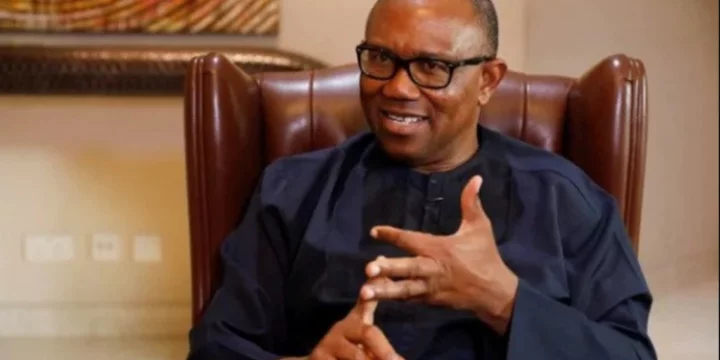
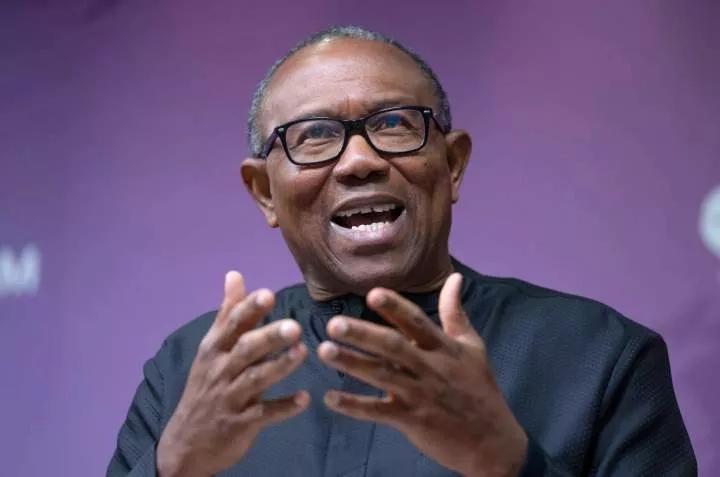

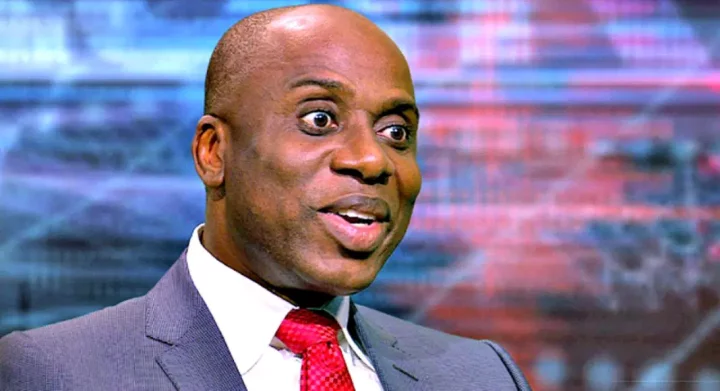

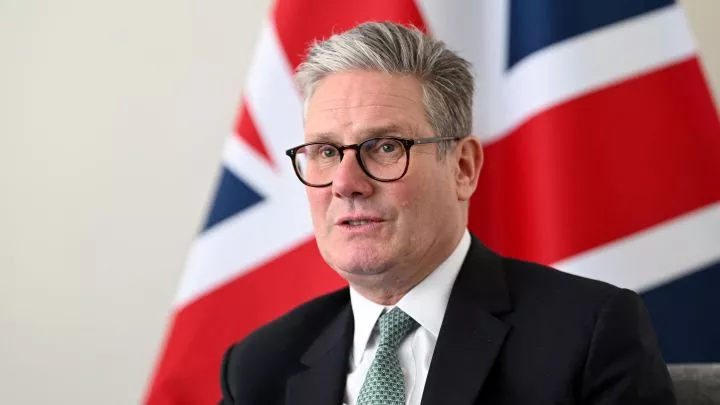

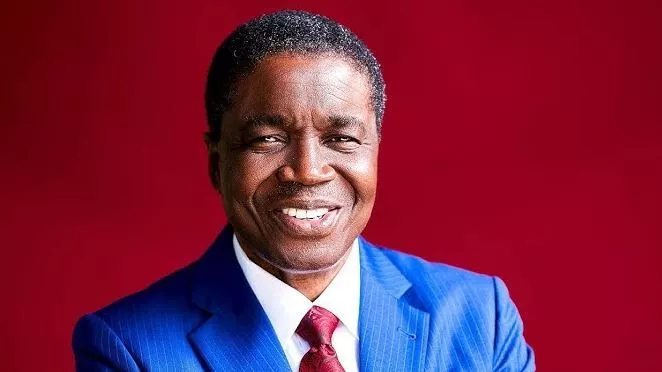





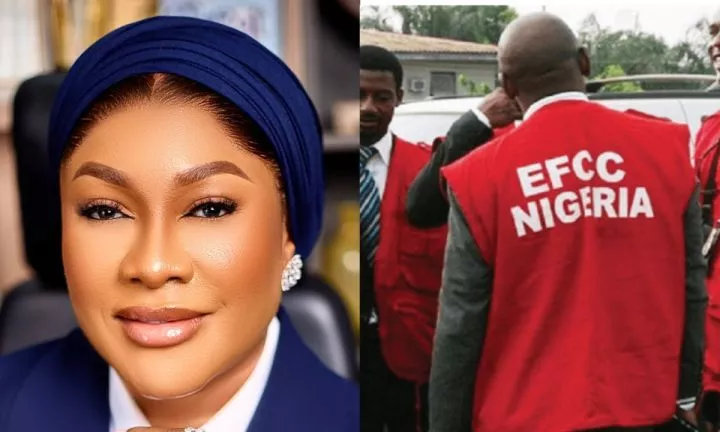



Comments